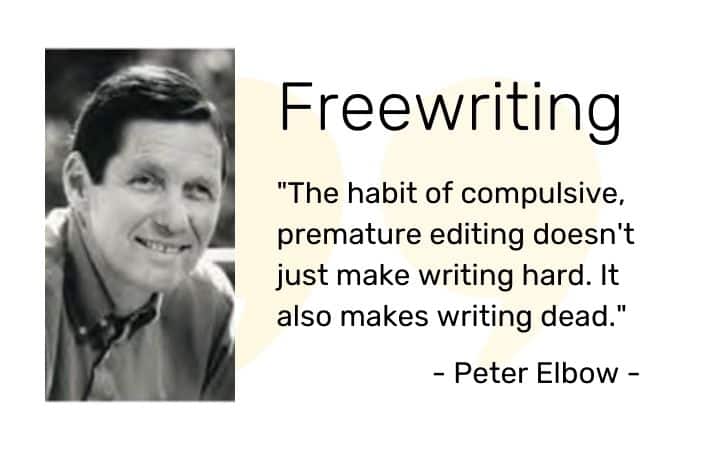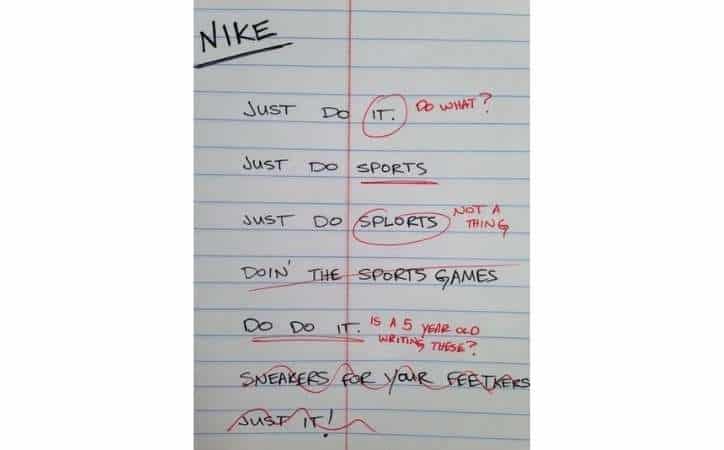It’s never a good idea to start with a blank page. A brief glance at my email tells me I need to go back and check it again. Or at the very least, I can finally get my desktop files in order. Run to the nearest coffee shop so I can concentrate better. (You probably don’t need me to point out that these coffees aren’t great for concentration.)
Finally, I find it difficult to begin writing anything if I don’t have words on the paper right away—or better yet, already there. This is true for all types of writing, from emails to blog posts to taglines. That’s where copywriting tips and advice come in handy, of course.
A copywriting warm-up consists of brief instructions to help you get started, rather than workouts like lunges or jumping jacks. Preparing your work ahead of time or resetting when you reach a creative block are just some of the ways these prompts might help you get your creative juices flowing.

You can escape the blank page or rewrite a project that has you stumped with these 10 copywriting tips, strategies, and activities.
10 Copywriting Tips
1- Make a list of all the things you need.
There isn’t a blank slate for most of us to start from. We’ve got a platform and, more than likely, a subject and aim in mind. Your dog-walking company might benefit from a Google Ads headline. As an example, you may be writing Facebook updates for your business. Copywriting tips might even be the topic of a blog article.
Take advantage of knowing your medium, subject, and end goal before you begin. Specifically, are there any word-count targets or constraints that I should be aware of? Is the copywriting for a blog, product packaging, or social media going to be used? Are you writing this for a blog article, a paid commercial, or a video script? Make a note of all the information you need to remember at the top of the page.

The target audience, scope, and goal should all be clear at this point. Make a note of it, as well. You’ll have a well-defined project once you have that. Moreover, you’ve begun copywriting.
2. Rescript your favorite tv commercial
To get started, try something else first. Have you seen a commercial that you really liked? Does this position appear often in your resume? Do you have a go-to ad?
Read, watch, and then redo those copywriting samples you’ve been saving. That marketing campaign should be adjusted to fit your company’s needs. Your blog post’s introduction, title and structure are all excellent examples of how you might repurpose these elements. Adapt your favourite ad for the introduction of a new product or service from your company’s current offering.
Isn’t it fun to rewrite? You never know what you might come up with!
3. Create an illustration of your project or concept.
There are several copywriting tips that don’t need the use of actual words. Listen to what I have to say.
The task at hand might be a little jumbled at times. Maybe you’re putting together a series of screenplays for a new product’s promotional videos on YouTube. Perhaps you’re drafting emails for a new customer-nurturing strategy. It might be difficult to get started on a project with so many moving elements and so many little bits.
Is it easier? Outlining the framework.

Put the bits of copy in order by arranging them in a variety of shapes. Grab a pair of scissors and cut them out, if necessary. Making a mental picture of it helps, as does figuring out the framework.
4. Take 10 minutes to write anything that comes to mind in your head.
Don’t know where to begin with those product descriptions or headlines? Give your mind a rest and write freely.
A freewriting exercise demands uninterrupted writing for a specific period of time with no supervision or feedback—that means no worries about grammar, no worries about straying off subject, no worries about even setting a topic, and no requirements to show anybody or look at it ever again. Writing is an iterative process, and students need to learn how to develop ideas without supervision or feedback. This approach, championed by Peter Elbow in the 1970s, has found its way into classrooms worldwide.

That’s why you may use it as a copywriting tip as well. If you want to get started, set a timer for 10 minutes and grab a pen and paper.
5- Find some information.
Research is a need for most copywriting, but it can also be a benefit to all copywriting. Be sure to study industry sources, peruse Twitter for relevant discussions, consult an expert, and go over your own account for intriguing data before submitting a post.
In certain circumstances, the text may benefit from the research you do.
Even if the background information isn’t used, the copywriting will be stronger and the text will be better for it.
6- Don’t write the intro just yet.
Blog articles, whitepapers and ebooks are all examples of lengthier material that might benefit from this copywriting strategy. If you’re having a hard time getting started, skip the introduction and go directly into your first subject.
Setting the tone of the material, introducing the subject, and developing reader expectations are just a few of the things an excellent opening does. As an example, an ebook about Google Merchant Center may start with an introduction that explains what subjects will be addressed, how the topics will be divided up, and what the reader can expect to learn after reading.
You have no idea what the reader is going to get until you write the article, so you have no means of letting them know what to anticipate. If attempting isn’t helpful, skip the introduction until the scope is clear and then return after the remainder of the information is complete.
7- Reading your work aloud
So many copywriting tips, but this one is a great way to help you improve your writing skills. There is a tendency to overlook the fact that even marketing content is not merely read or scanned, but really read. Subvocalization is a term for this process, in which the words are sounded out and even heard as part of one’s own internal speech.
Be careful to pay attention as you read your work out loud. There may have been a few sentences that slipped your mind. Did you notice an unintentional rhyming phrase or a jumbled phrase? Did you find it difficult to follow? Rewrite

It’s amazing how different everything sounds when read aloud.
8- Talk to a colleague about the situation at hand
Grab a colleague while you’re already up and conversing. One of the best methods for figuring out how to summarize and communicate your thoughts is to have a conversation with a friend or colleague about your current topic.
You may also use it to transform your procrastination brew into guilt-free, productive coffee.
9-A single statement to summarize
This is an excellent exercise in copywriting to help you break out of a rut or jumpstart a new endeavour.
Consider the structure, the objective, the scope, and the audience before you begin writing. Then, sum it up in a single word.

If you’re struggling to write anything that’s clear, succinct, and correct, it’s a good sign that you need to spend more time thinking about the project before you start writing.
10- Produce an unremarkable, rough draft.
“You never have to marry your first draft,” a lecturer told me in college. You don’t even have to be in love with it to get started. You’ll almost always have to go back and make changes once you’ve finished content editing.

A never-ending cycle of modifications might entail having to stare at the blog post or product page indefinitely, but it can also be freeing. This is intimidating. Don’t hold back when it comes to starting with bad ideas and writing things you wouldn’t want to read about your employer. Work out your thoughts in a rough draft before you begin.
Just don’t forget to go back and make any necessary edits.
Bonus: Keep these copywriting tips in mind, as well!
A short recap of these 10 copywriting tips is as follows:
- Make a list of what you need.
- Write a new version of a well-known commercial.
- Make a drawing of your task or concept.
- Freewrite
- Look for some information
- For the time being, you may forgo your introduction.
- Aloud read your own work
- Engage in conversation with a colleague.
- In a single word, describe what you’re working on.
- First, write a sloppy piece of work.
Even if you’ve already written some text for ads or blog articles, you’ll almost certainly need to do it again. To save yourself some time and work, run through these copywriting tips as many times as necessary.




